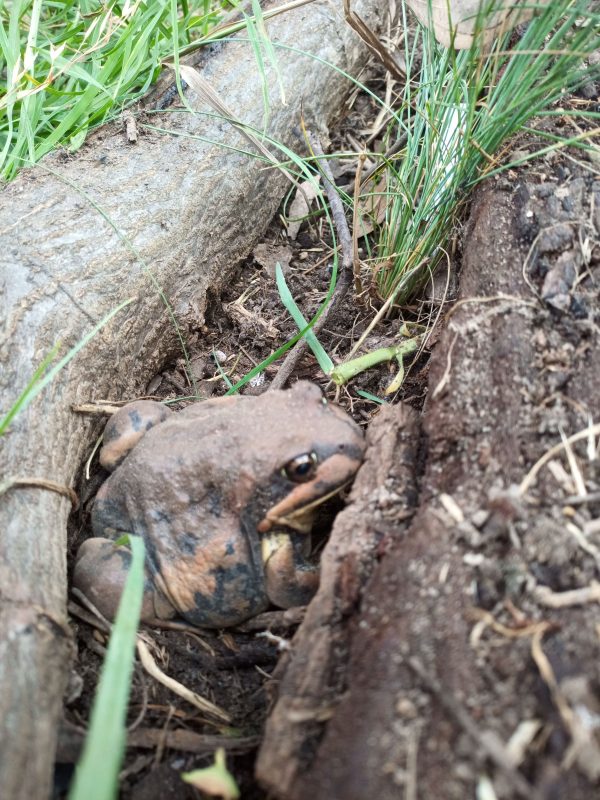Bullfrogs, Pobblebonks and Banjo frogs are all common aliases of this impressively sized local. Known officially as Limnodynastes interioris this titanic amphibian is one of our local favourites which is often heard more than seen. This local frog gets one of its names – “Pobblebonk” – from its call, which sounds like a loud and singular: BONK! The males will generally do this call throughout the mating season in places where water is available, including rivers, wetlands, and dams.
These great goliaths are also expert survivalists and will endure long periods of dryness by tunnelling underground, using their specially adapted hind legs with shovel-like toes. When rain soaks the soil, they will emerge to feed and mate. The best time to spot them is during or after a rain event at night as like many frogs, they are nocturnal to avoid both predators and the moisture loss incurred by our hot summer sun.
They can generally be found along the Murray River and Central NSW near bodies of water during the breeding season, from August to April. However, they also travel and can find themselves in people’s backyards, seemingly nowhere near water. Not to worry though! They are likely looking for food and will often tunnel their way into garden beds. They won’t harm your plants – in fact they will happily go after many insects, spiders, and other garden variety pests!
If you are interested in encouraging these subterranean survivors to keep coming back to your yard after breeding season, I would recommend keeping your garden complex with many insect-attracting plants, maintaining garden beds with rich soil to allow burrowing, and minimising chemical use as they are vulnerable to many pesticides and herbicides. And finally, be careful when digging up garden beds as they may be sleeping in the soil!







